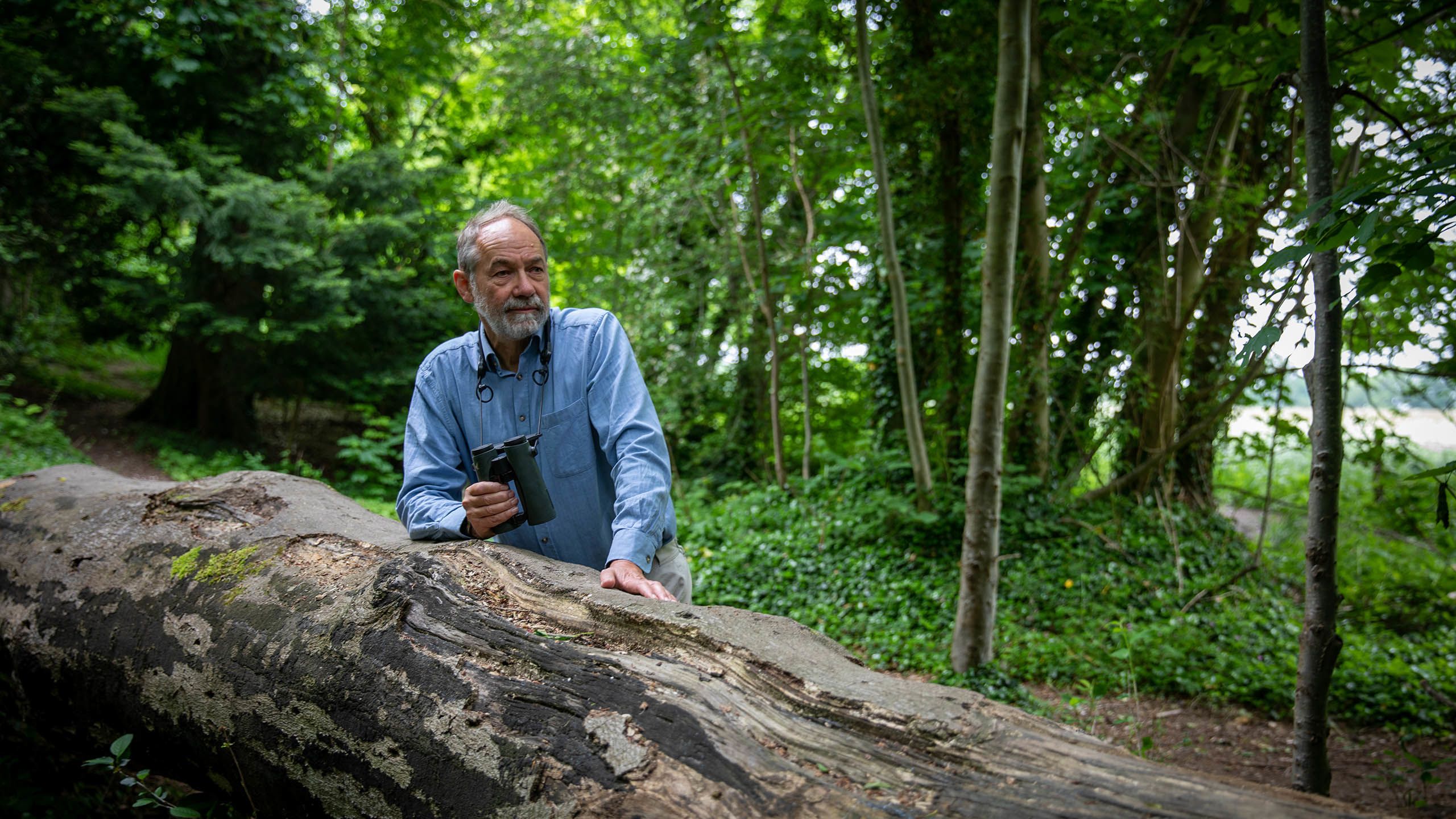This Cambridge Life
The conservationist helping us to make better decisions

Bill Sutherland has started a revolution in conservation. Put simply he’d “like us to stop doing the things that we know don't work and do more of the things that do” – and with global collaborators is building the tools to help people achieve this.
I’ve been an avid naturalist and birdwatcher since my teens. As a student I became involved in practical on-the-ground conservation projects and loved contributing something back to nature.
For much of my working life, conservation remained a hobby. I was primarily an ecologist specialising in creating models of populations based on understanding animal behaviour.
My life changed one afternoon in the middle of a rather dull strategic planning meeting. The words “evidence-based medicine” caught my attention and afterwards I asked my colleague to elaborate. I was intrigued.
I was struck by how obvious the idea was. The approach is to review and analyse all the published research on a topic and then make this information available and accessible to practitioners so that they can make more informed decisions.
I immediately pondered if conservation could adopt this approach. I’d become increasingly concerned that practice seemed divorced from science.
Theories seemed to be stated as facts. To give an example, I supervised a master’s student who discovered that, contrary to established thought, burning reedbeds did not kill the soil invertebrates. We searched for the original literature and found none – it simply didn’t exist.
Not long after that strategic planning meeting I was visiting a PhD student in Cambodia. During a dinner one evening the conversation turned to evidence and a colleague’s wife, a doctor, produced Clinical Evidence – an encyclopaedia of sorts for medics listing ailments and corresponding treatment options along with summaries of the underpinning research.
I realised that if we could produce a similar guide for conservationists, it would transform our field. Along with colleagues we wrote What Works in Conservation. We made this book freely available to everyone via open access and update it annually.
With a global team we developed a free online database called Conservation Evidence, which reviews the literature on any given topic. This resource allows conservationists to make informed decisions, based on evidence, on 3,119 (so far) different practical interventions. We review the literature in 16 non-English languages – this is crucial because we have shown that 35% of the literature is not in English. Users have come from 233 countries and overseas territories.
Helping those responsible for deciding policy make better decisions based on evidence has become a key focus of my work. There’s a wealth of research out there which needs to be robustly applied to decision making but it’s too often ignored; decision makers should be standing on the shoulders of giants rather than on their toes.
With over 200 collaborators worldwide, we have created a set of tools enabling the embedding of evidence into practice. And in partnership with a wide range of organisations we are gradually transforming global conservation practice.
Back in 2006 George Bush announced a move towards biofuels, and the EU soon followed, but as a community we had not seen this coming and were pretty unprepared. Although justified by benefits to the climate, the reality was that insufficient research had been carried out and we subsequently discovered serious negative implications for climate change, food production and the environment.
For the past 12 years, I’ve been involved in horizon scanning. The aim is to reduce the risk of being caught out again. We bring together a group of global experts from a range of fields and ask, “what’s likely to come up?”
A decade after our first scan in 2009 we reviewed our 15 predictions. Five of these, including microplastic pollution, synthetic meat, and environmental applications of mobile-sensing technology, had become mainstream with another six topics having moderate impact.
Globally we face enormous challenges like recovering from the health, economic and social consequences of COVID-19 and, of course, climate change. But I feel there is also a sense of optimism. More people are realising that nature isn’t just a luxury, it’s fundamental to our existence and we need to protect it.
The Cambridge Conservation Initiative (CCI), based in the David Attenborough Building, is a fantastically exciting place to work − there’s an atmosphere of people determined to improve the planet. There’s an amazing mix of conservationists and academics, policymakers and practitioners. Almost every conservationist in the world has walked up and down those stairs.
There’s a Japanese practice called kaizen meaning continuous improvement. I think in conservation we should ask “are we doing this in the best way we can?” and often there are opportunities for improvement. I want conservation to be more effective, but also more broadly I want to improve the links between science and policy.
I see conservation tackling those big issues we face and finding solutions that mutually benefit the natural world and society. But we need to link research and practice in a more structured, rigorous and professional way. We need to be looking ahead, learning from each other’s experiences and using all the information available. In this way we can make a real difference to the planet.
William Sutherland is the Miriam Rothschild Professor of Conservation Biology based at the Department of Zoology and a Fellow of St Catharine's College.
This profile is part of This Cambridge Life – stories from the people that make Cambridge University unique.
Words: Charis Goodyear. Photography Lloyd Mann.





